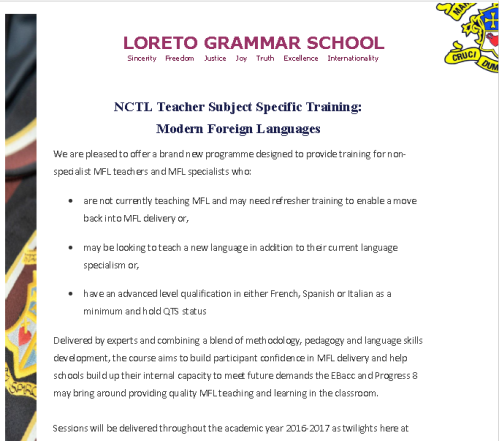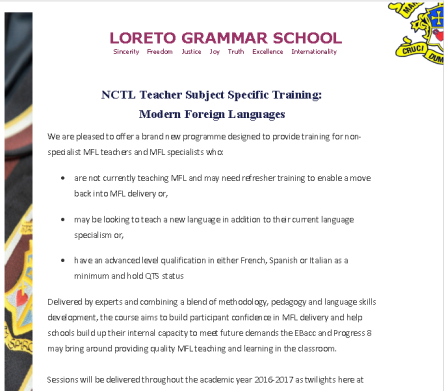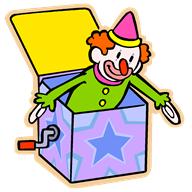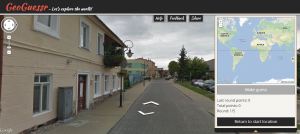A combination of catching up with all things Language World and a conversation at work has raised a question which puzzles and perplexes me.
Just a small question.
What constitutes ‘great literature?’
The Languages programmes of study: key stage 2 clearly states that pupils should:
“… read great literature in the original language.”

I know that in my head I have a definition of what constitutes great literature for me. Other opinions are, of course, available, but I would expect a combination of some of the following:
- addresses issues of significance to the reader
- explores aspects of true human experience
- may provoke an emotional response
- contains beauty in the language
- makes the reader consider something they have never thought of before
To be able to read a text which does any of the above, then I need a certain level of language knowledge, skill and ability to access it. Now, even as an adult with a GCSE in Spanish, I’m not convinced that I can read ‘great literature’ in Spanish – even if I truly want to.
Which is why I am struggling to make sense of the two halves of the phrase “… read great literature in the original language.” I am all for using authentic songs, rhymes, stories and poems when teaching foreign languages at KS2 (or at any age, for that matter). And although many of these items could well be called ‘classic’ (classic fairy tales, classic nursery rhymes etc), I can’t see how this constitutes ‘great literature’ as per my own definition.
So I wonder if my personal definition is limiting my ability to understand what is meant? Do I have a misconception of ‘great literature’?
What’s really interesting, though, is that the English programmes of study: key stages 1 and 2 only contain the word literature twice –
“Through reading in particular, pupils have a chance to develop culturally, emotionally, intellectually, socially and spiritually. Literature, especially, plays a key role in such development.”
“… to develop their love of literature through widespread reading for enjoyment.”
Not ‘great literature’. Just literature. In English lessons, KS2 pupils will not be required to study great literature, they will only have to read for enjoyment. This, I get. This, I understand. This works for me in the context of foreign language learning too.
So why the difference? And how to address it?
As I said, puzzled and perplexed. Clarifications most welcome!
Shout, shout, let it all out:






